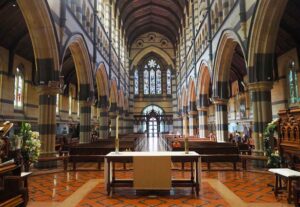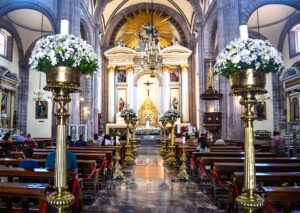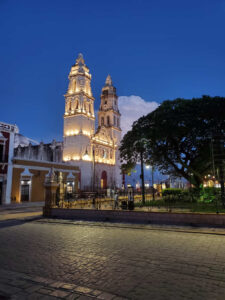Salisbury Cathedral is famous across the globe, not just because it is an exquisite example of early English Gothic architecture, but also because it has the tallest spire in the whole of the UK, those belonging to other cathedrals having long since crumbled to the ground.
It is also home to the best-preserved copy of the Magna Carta, the 13th-century document on which the US Constitution was modelled, as well as the world’s oldest clock and some significant tombs and memorials.

Salisbury is in the depths of the Wiltshire countryside in southern England, uniquely positioned between the sandy beaches of Bournemouth, the ancient royal hunting grounds of the New Forest and yet still only 90 minutes away from central London.
One of the most beautiful in Europe, the cathedral is actually the third one built in Salisbury, the first two having been constructed on the top of a small and windy Roman hill fort now known as Old Sarum.
Local legend has it that looking to expand, the residents decided to shoot an arrow and build the new cathedral wherever the arrow landed. The arrow hit a deer, who ran some distance and then died, and that is where the new cathedral was constructed.

Built in 1220, the cathedral is unique because it was built in the space of just 38 years, a very rare thing as so many others were built over centuries, which means that architecturally speaking, Salisbury cathedral is all from one period in time rather than a mishmash of styles.
It was built on waterlogged gravel and its foundations are just 4 feet deep, making its survival all the more remarkable. The spire was added in 1310 and although it is a considerable weight and has caused some damage, the repairs made over the years, including some by Sir Christopher Wren, have kept it standing firm. You can in fact climb to the top of the tower, look up into the spire and see the medieval scaffolding still in place.
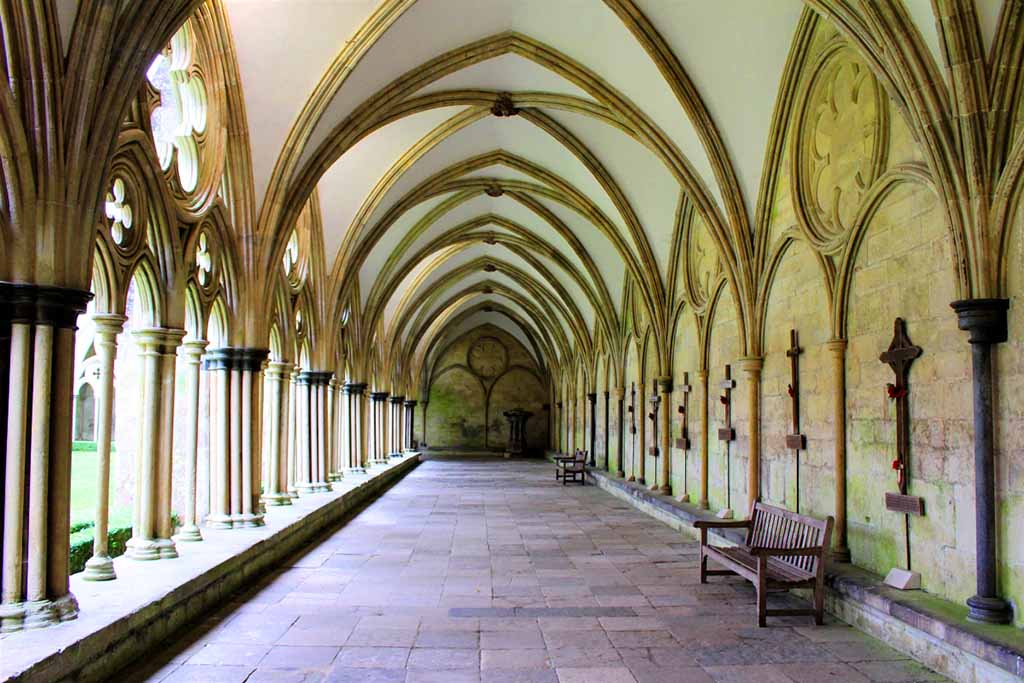
Inside the cathedral are some impressive monuments and tombs. The clock, which has no face, was once installed in the bell tower which was destroyed after the civil war, and dates from 1386. It still ticks, chimes every hour and is wound by hand daily.
Perhaps the most impressive artefact within the cathedral’s hallowed walls is the Magna Carta, one of only four copies in the world and the best preserved of them all.
It resides in the Chapter House, where the clergy once held all of their meetings, a high vaulted polygonal room surrounded with stained glass windows. The Magna Carta ended up in Salisbury because when it was signed by King John in Runnymead in 1215, Elias of Dereham, his steward, was in charge of distributing the copies and brought one back to Salisbury with him, where he was overseeing the construction of the cathedral.
In a small tent to protect it from light, the document is a highlight of any visit. Surrounding it are display cases, a constantly changing small museum of artefacts from the cathedral’s extensive history.
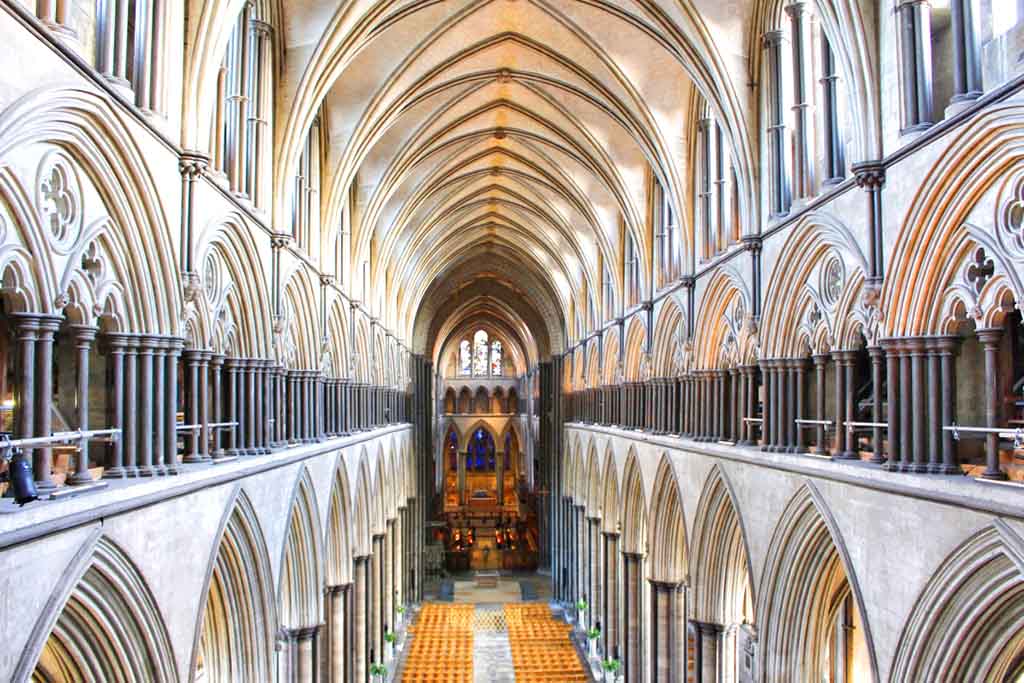
Occasionally the cathedral library is opened to the public. Started in the 11th century in the original cathedral, it still has about 60 texts from the 11th and 12th centuries as part of its collection of over 12,000 books, all housed in elm bookshelves from trees grown in the cathedral grounds. You can book a tour of the library or wait for one of the special open days to see it.

Another tour which is always worth doing is the Tower Tour, when you get the chance to climb the narrow stairs to the top of the tower.
The route takes you up into the roof where you can walk amongst the wooden beams, see the bells and all of the supports put in place to keep the spire upright as well as walk out onto the narrow parapet and see some wonderful views over the city and the cathedral close. Book this in advance as they can sell out quickly.

The cathedral is set in the largest cathedral close in the country, which is filled with grand houses built by the medieval clergy. Some of these are open to the public and a walk around the close is a rewarding experience, as the buildings are all wonderfully varied, from tiny cottages with rose filled gardens to huge Georgian town houses with stately façades. There’s a gift shop next to the Refectory Restaurant where you can grab some mementos of your visit.

For all of its historical interest though, the cathedral is primarily a place of worship and has daily services which include Evensong, the most meditative of them all. You can sit back and listen to the famous choir, their voices echoing around the quire while you watch the shadows lengthen at the end of the day. It is a peaceful way to end a visit to this most impressive of English cathedrals.
Bio: Sarah of Slow Travel

Sarah runs Slow Travel, a website for those who want to travel off the beaten path and avoid the crowds. Whether that is uncovering new places to explore that few people know about, or how to visit the bigger tourist sites without hordes of people, the website is a useful guide for Slow Travel in the UK. Follow Sarah from Slow Travel on Facebook and Instagram.
Other Posts To Read
- Did you know these Colosseum facts?
- Military Fortress Montjuic
- What to buy in France
- Tung Fort Trek
- What to buy in Rome


